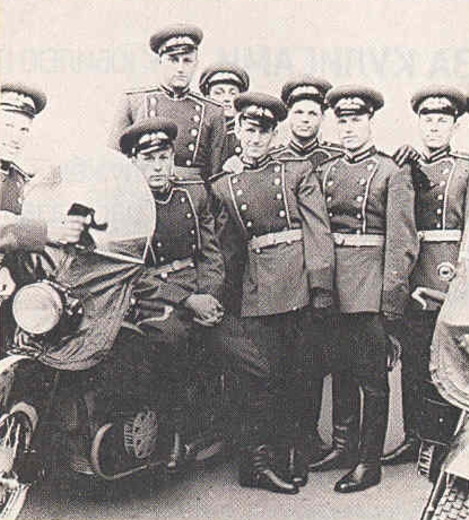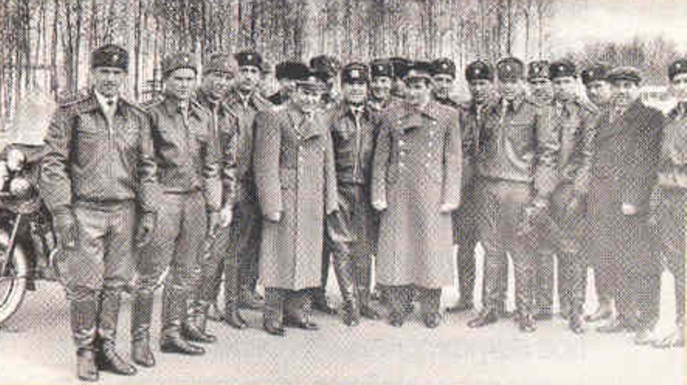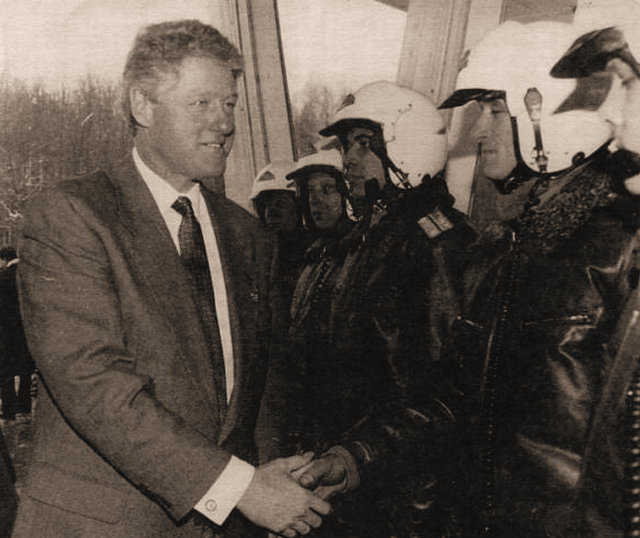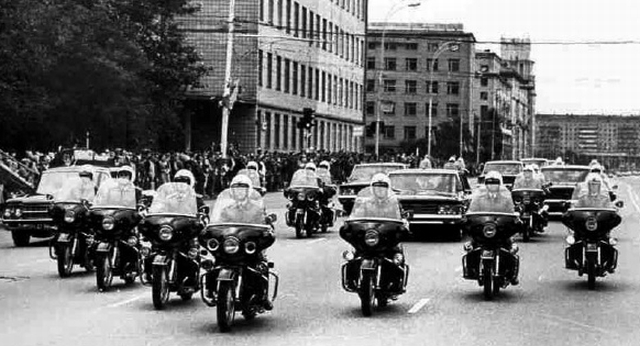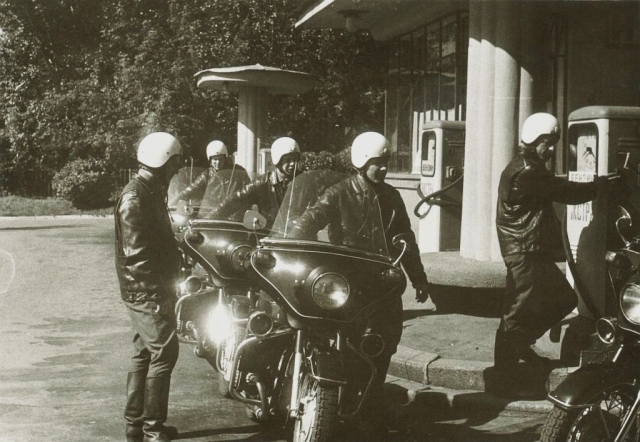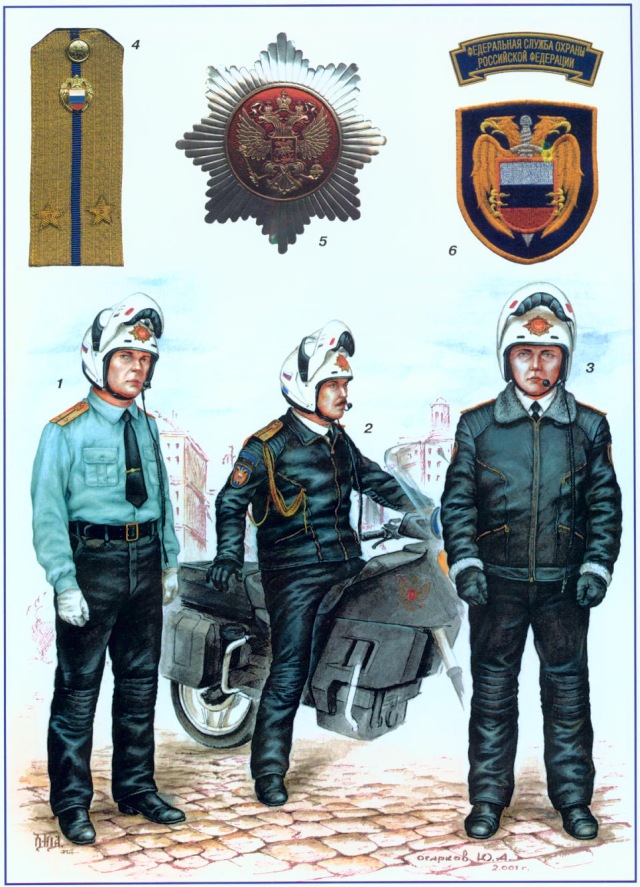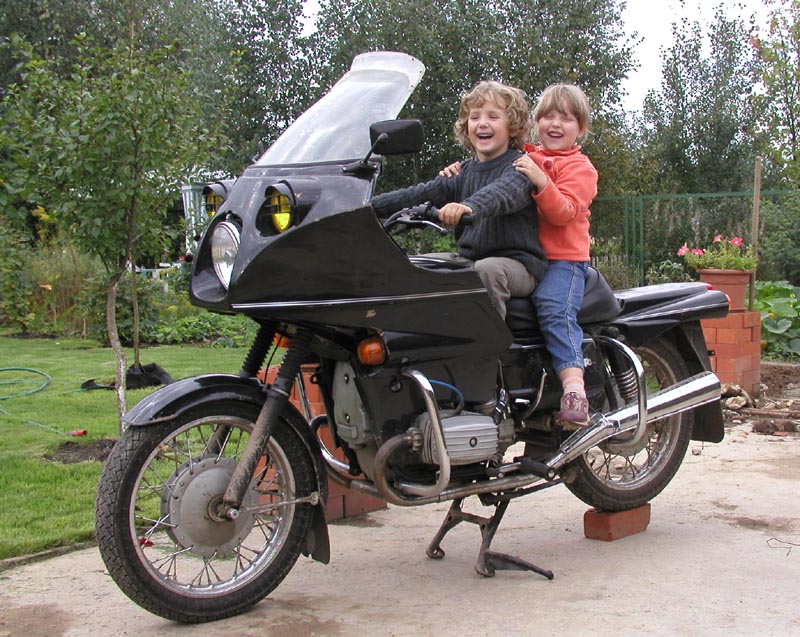

BEHIND THE SCENE
Anniversary of honorable escort service
Text by A. Kochetov and E. Bobrikov, photos by Evgeny Bobrikov and Federal guarding service of Russian Federation

From ancient times solemn and parade appearance of leaders to public, rides of rulers and foreign missions were accompanied by ceremonies and celebrations. So tradition of honourable escort was set. In ancient Russia its particular customs of receiving guests was formed by 10th century. in 16-17th centuries embassy protocol stated an escort of cavalry archers for high guests. During Peter the Great rule diplomatic receptions were conducted as in European traditions so for coronation ceremony of his spouse Queen Ekatherine I a unit of cavalry guards was created. Such custom remained in practice till 1800 when cavalry guards regiment on regular basis was established as a part of tzar Guards and remained till 1917. A number of countries of the world have retained cavalry escort and in Russia revived in 2003.
At the beginning of the 20th century horse escort gave its way to new means of transport, there appeared automobiles and motorcycles, so there arose new possibilities for escort and guards. They were begun to be used in 1906. For this Russian Tzar Nickolay II administration bought possibly best samples of vehicles for that time. Register of guarding agents of the tzar has some detailed reports on such buyings. For instance, in 1914 Peugeot motorcycle was bought, no. 19566, engine no.28518, magneto ignition, spring fork, cargo rack, motorcycle prop and a bag with tools costing 500 rubles and 6.50 rub for shipping, Archives also have notes on special motorcyclists’ clothes expenditures, such as “redesigning straps for pilot jackets” and notes on parts aquisition and repairs done.
After the Red Russian Revolution in October 1917 transportation services were a duty of 1st Combat motorized squad and Autobase of Peoples Commissars Council, also “an automobile department of All Russian Central Executive Committee (“VTsIK”, рус. ВЦИК , translator’s note) as created to “serve VTsIK necessities in transport … and perform assistance and collaboration technically by their means in disposition (special automobiles) guarding the Kremlin, VTsIK and Peoples Commissars council seats”. By 1918 there were 5 motorcycles in service of Autobase of TsIK, but not all in working condition. Same situation was with other authorities bodies and departments. Surviving from tzar times vehicles were used in fact without special facilities for their servicing and repairing. In 1920’s motorcycles were in a limited use mostly for couriers and messengers.
New state powers rejected all historical traditions including ceremonial ones. Though after the USSR was formed it was necessary to bridge relations with foreign states, for which foreign etiquette rules had to be followed. In 1923 Peoples committee of foreign affairs worked out “Concise instructions on politeness manners followed in bourgeois community”. Nevertheless, Soviet protocol of politeness was practically based on case. As visits were rare, a special commission was created for each visit and worked out its details, while appearances of soviet leaders to the public were quite rare as well.
During World War II one of main tasks was co-operation with the Allies. The USSR territory held several international meetings, but at the war it was not for ceremonies.
Changes occurred in 1950’s when some warmth in international relations followed, foreign affairs and contacts became broader, meetings on top level were organized often. Time came for establishing a politeness protocol corresponding to international standards in order to stress the status of the USSR as the biggest state in the world.
On 21 January 1956 a separate regiment and a motorcycle platoon was formed by the Kremlin commandant, entering the 9th department of KGB USSR. The reason was not only enhancing meeting or escorting ceremony, but guarding and security purpose. In 1955 Nikita Khrushchev visited Yugoslavia, where he saw a motorcycle escort, after this the Kremlin commandant received an order to create similar one. D.V. Gorbachev, veteran of honorable eskort recalls that Kremlin Eskort motorcycle debuted in summer 1956 when Marshal Tito, President of Yugoslavia paid a visit to Moscow.
General tendency of 1950-60’s was an attempt to make reception ceremony more solemn and even pompous. Solemn meetings accompanied by military honours, participating workers, portraits, banners, speeches, tours around country during visits, appearances to public and even “Fireworks of Nations” (21 firings) with hymn playing. Namely in this period of time “Kremlin eskort” motorcycle unit was biggest in number, 19 machines, 7 of them in head group.
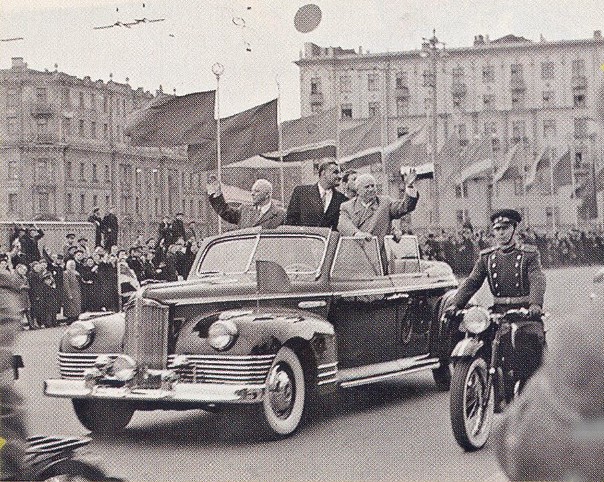

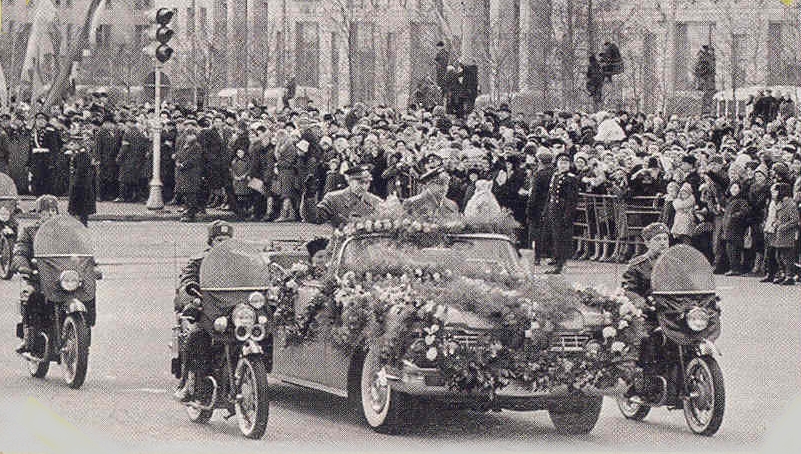
During Leonid Brezhnev’s rule, the protocol was rationalized, so the Fireworks of Nations were omitted as well as many thousand public rallies, being most pompous elements. And the honorable escort became of lesser need. In December 1991 the USSR was left in history records only and since that time foreign visit protocol has been regulated by president’s orders.
Now the honorable escort has the same duties of escorting and guarding, to pass their route without obstacles. The escort is meant for state and official visits, with delegation car to be escorted only.
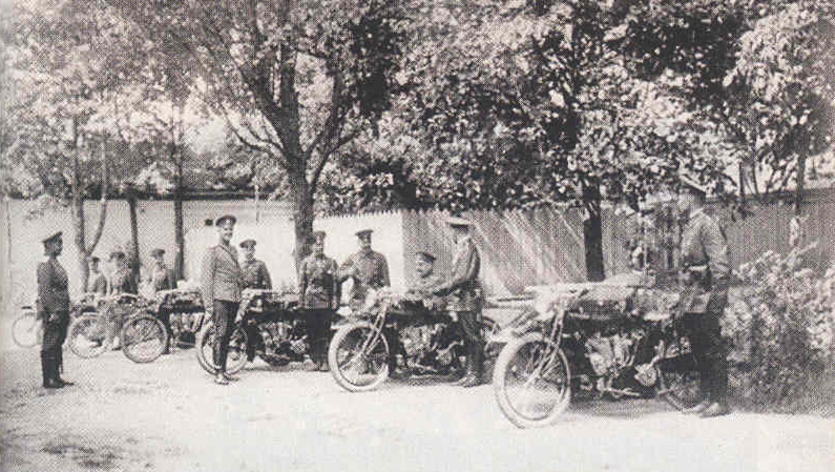
Motorcycles
At the beginning of the 20th century Russian tzar palace commandant had only best samples of motorcycle makes of the world. In 1916 the garage of guarding agents of tzar Nikolay II had in disposition 10 motorcycles:
- 3 Harley-Davidson, 11 hp, 3-speed gearbox., no sidecar;
- 4 Indian 9 hp, 3 speed gearbox, with sidecars and electric lighting;
- 1 Gumbert, 6hp, 3 speed gearbox, with sidecar;
- 1 Indian 8 hp, no speeds and no sidecar;
- 1 Peugeot, 2 hp, no speeds, with sidecar;
During the Civil War years lack of transport was especially noticeable. Report of 1st Automobile combat squad in the name of Y. Sverdlov under VTsIK dated 3rd Jul 1919 lists 6 Harley-Davidsons two of which were with sidecars, four solo, two of latter were left in parts, 2 “Klino” in parts, 1 “Stenweis”, and 1 motorcycle of “unknown make”. Same and even worse situation was in other departments. The motorcycle escort squad formed in 1956 used first mass-made M-72s of Irbit plant. Since 1952 this model was begun to be made in Kiev motorcycle plant, which became the only supplier of honorable escort motorcycles till 1993. Since 1959 K-750 were assembled and soon K-650 with more powerful engine appeared. In 1960-70’s special modifications of the latter were used by the honorable escort. They were single seat and had metallic fairings with enhanced comfort, power and smoother running, a part of these machines were equipped with USB radios and special signals. In 1970’s Kiev motorcycle plant developed Dnepr-14 based on mass-produced Dnepr MT-10, first was constantly modernized and had been used in honorable escort till beginning of 1990’s.
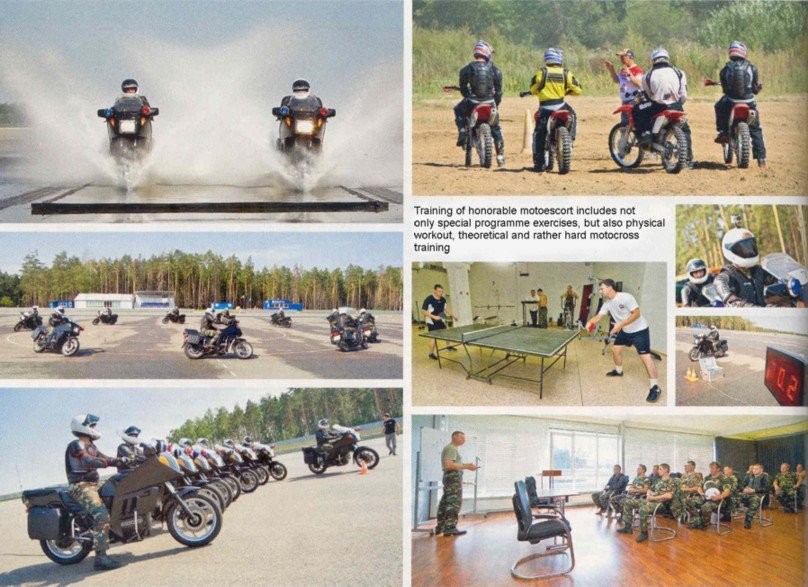
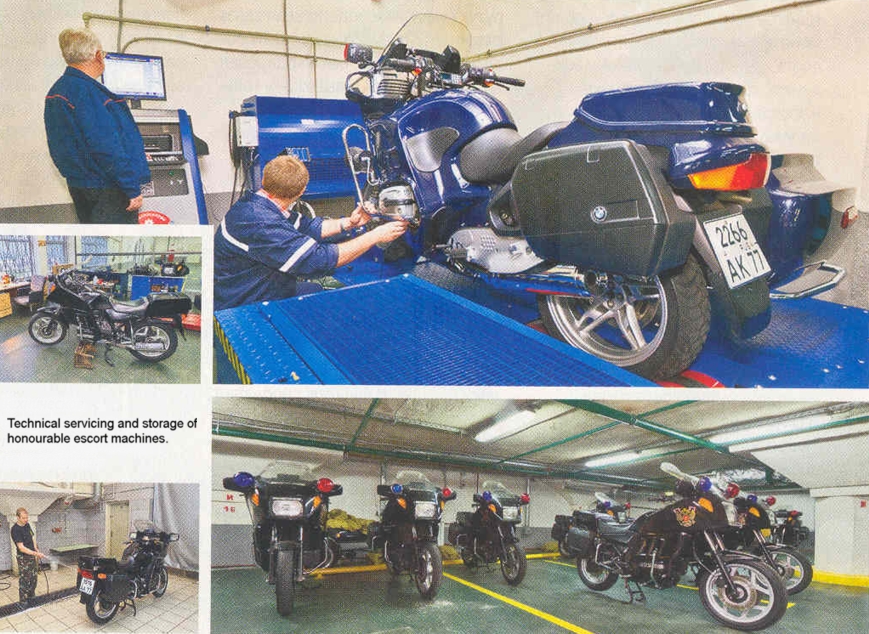
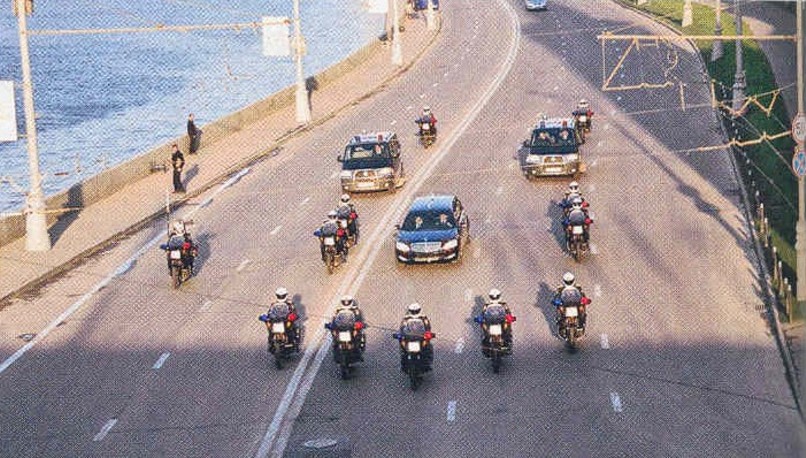
Requirements for escort motorcycles were very high and not always producer could have corresponded them. For example, model “Escort-86” could not have met technical requirements when it was developed, so for escort needs BMW motorcycles were bought in 1993. Special police modification K75RT is used nowadays, for winter it is coupled with a sidecar made specially to order in Great Britain.
Source: MOTO magazine, Feb. 2012, Russian monthly edition
Translated (from Russian) by Eugene Radchenko ©2013 specially for b-Cozz.com
additional reference photos
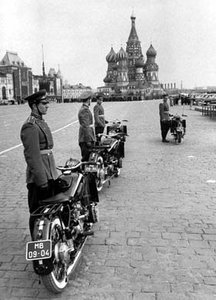
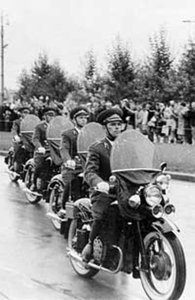
other photos and notes:
I believe you’ll find they were built by Motoprom at Sepukhov. Steve Wiggins



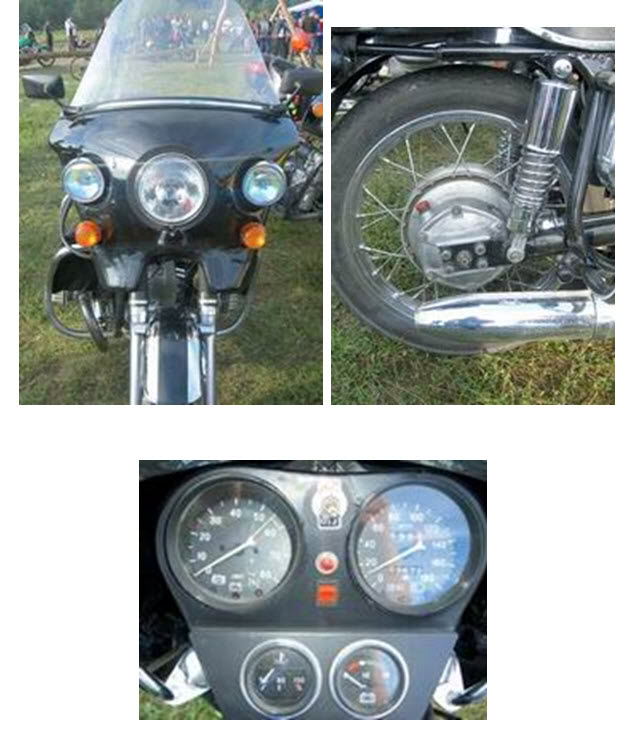
above: 16/05/09: VMC-Ural/Dnepr (Flemish Ural and Dnepr Motorcycle Enthousiasts) announces with pride the arrival of the fourth Dnepr Kremlin Escort in the group. We have four of them in Belgium. Are there other owners in this group? …or do you know someone? Please let me know.
It’s a rare bike. The Dnepr 750 for the presidential Soviet escort was made, with German “Bing” carburettors, electric starter and special tyres. The power of the engine was of 50 hp. The last set of these bikes was released in 1989. Only a dozen were built each year. Dnepr. VMC-Ural/Dnepr, Belgium

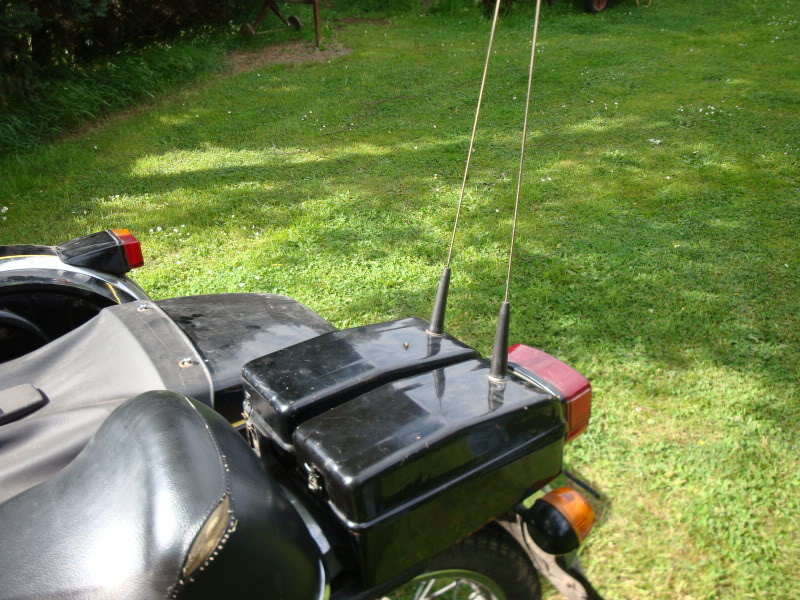
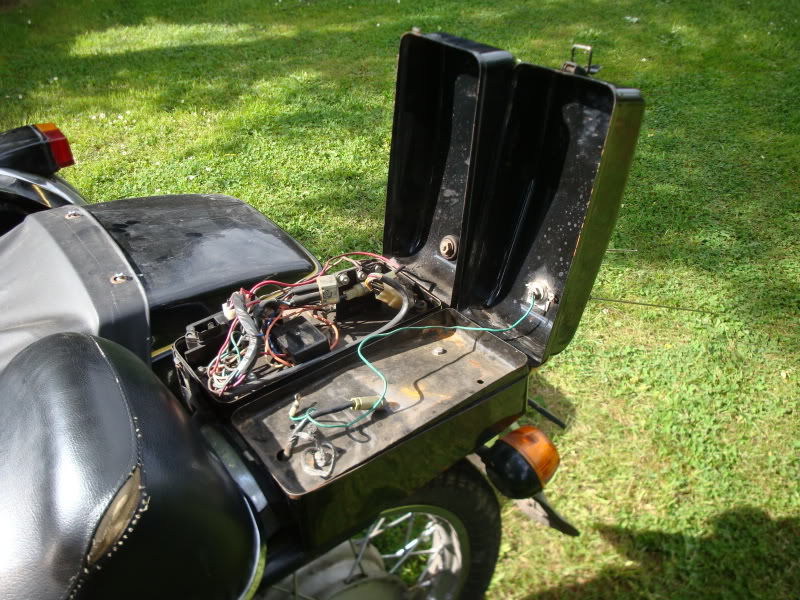

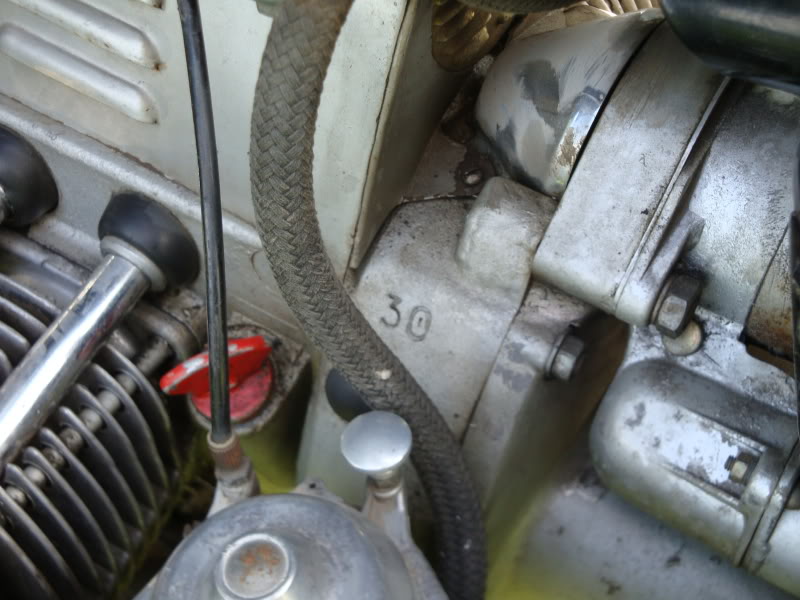
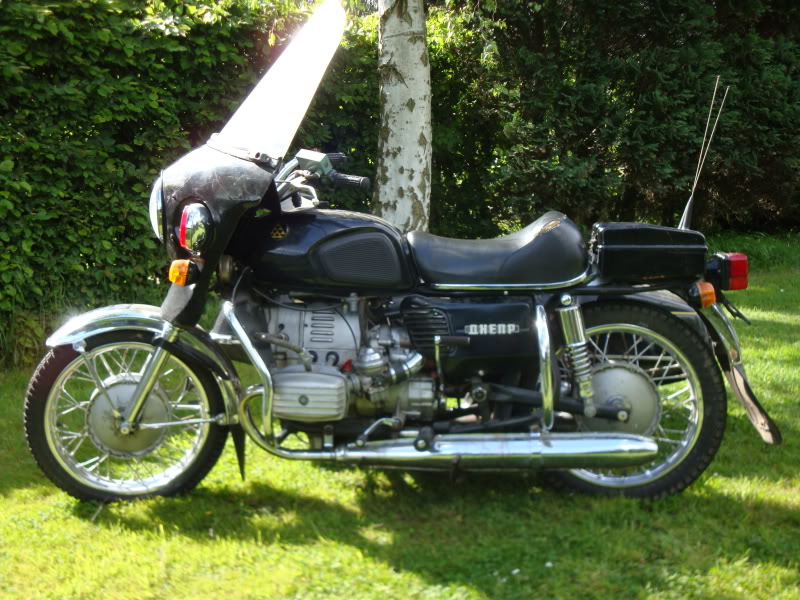


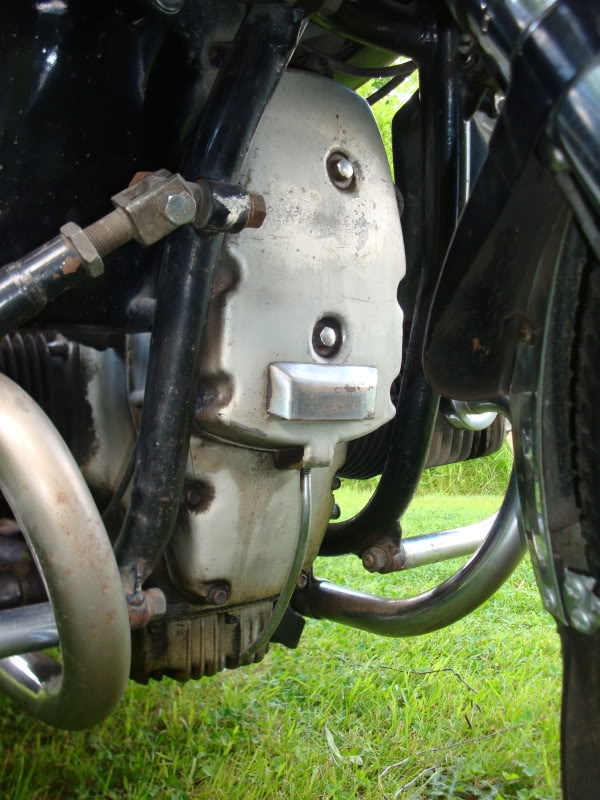
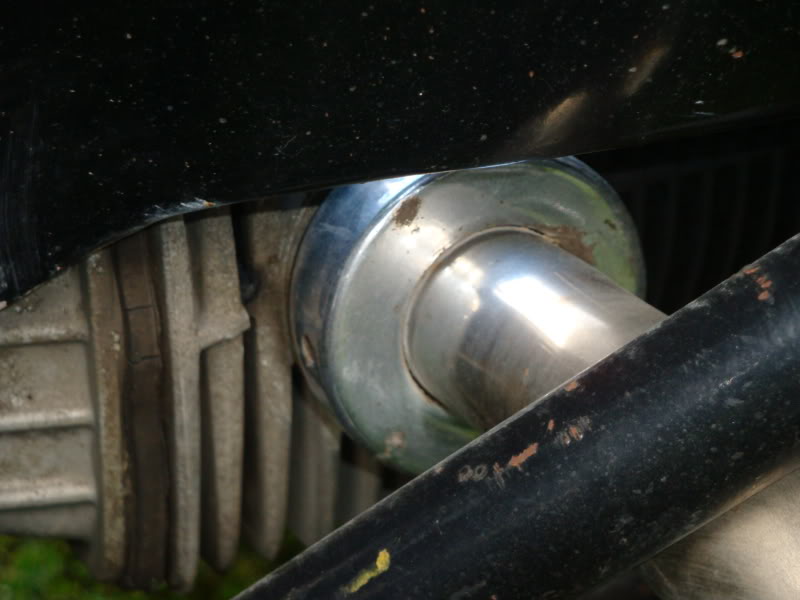
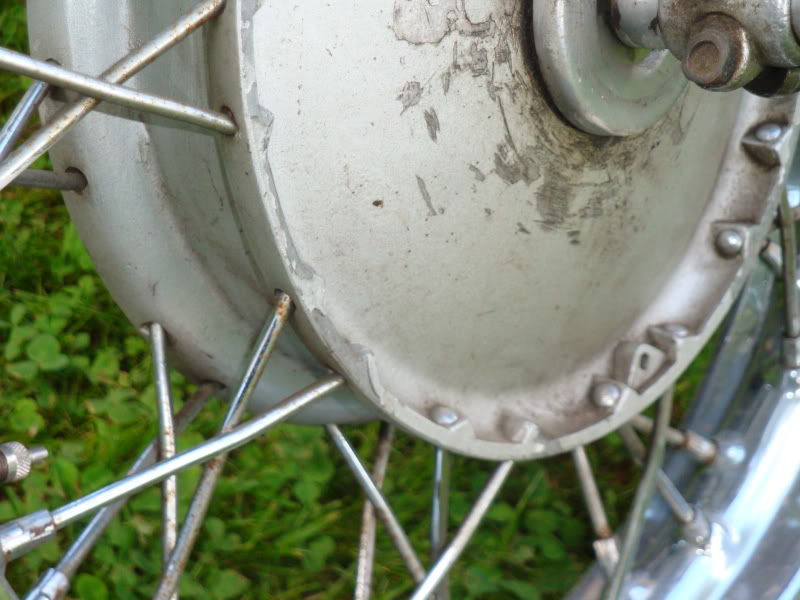
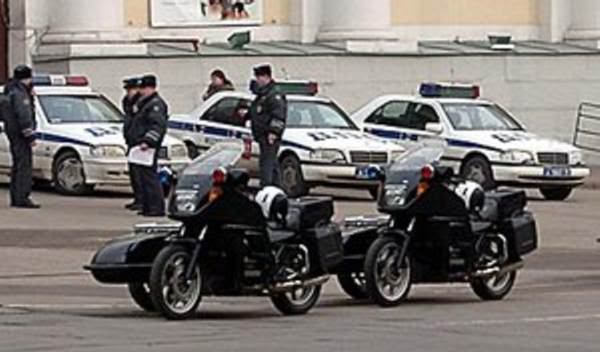
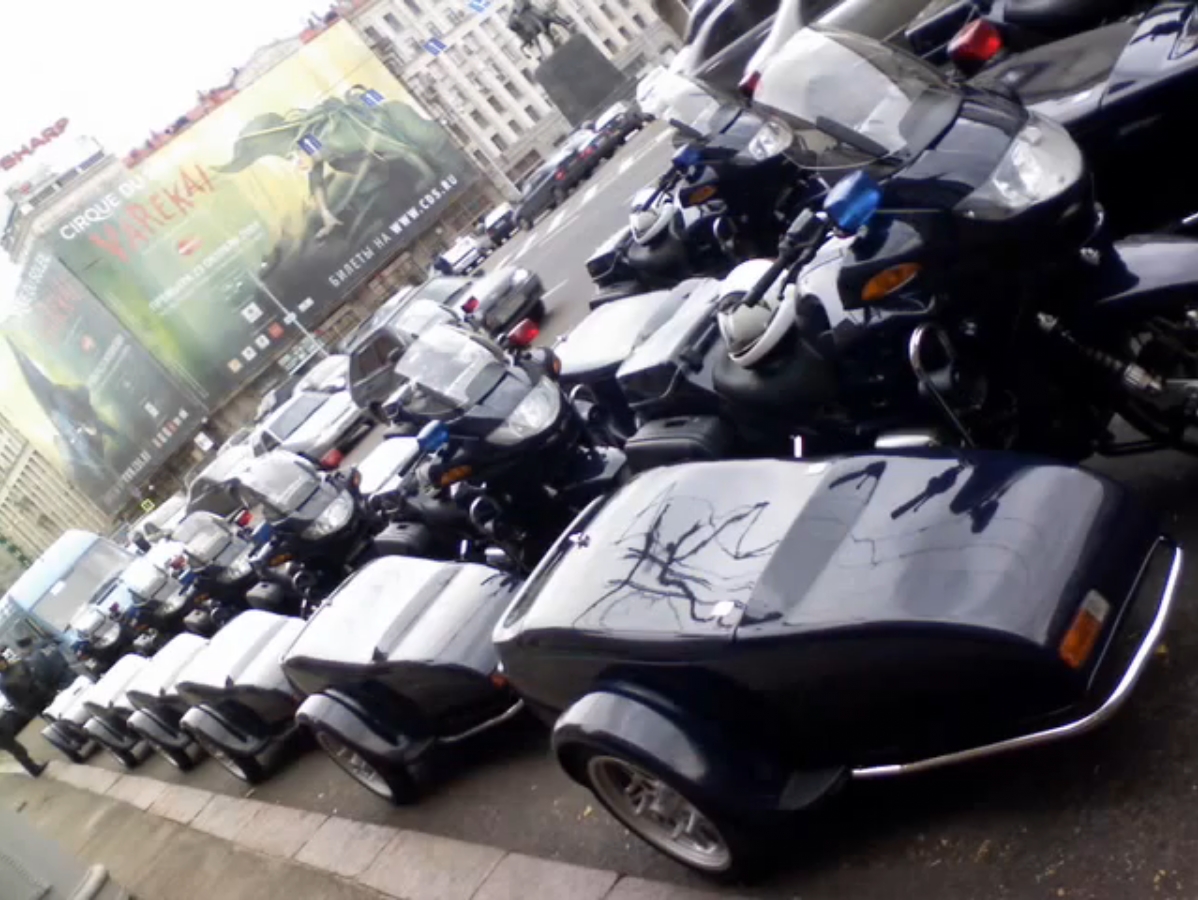

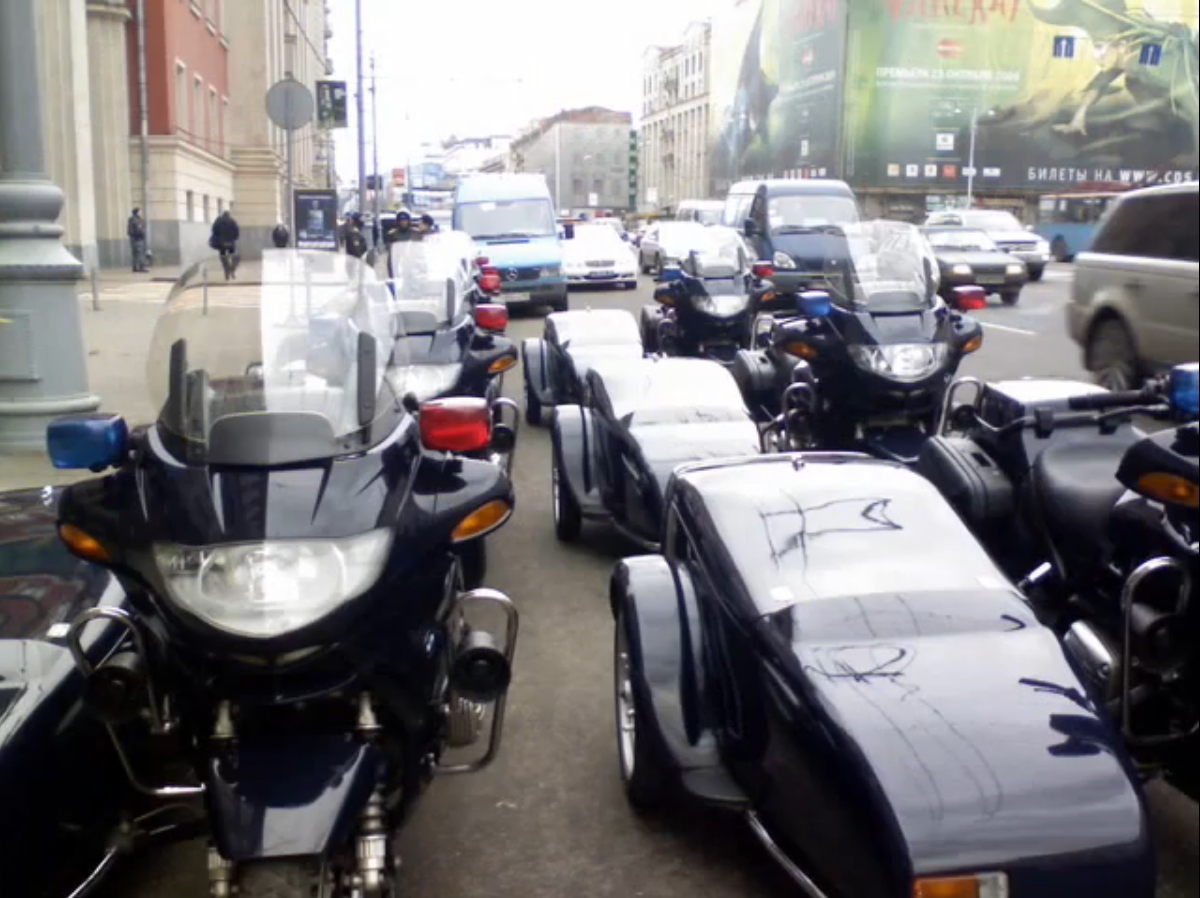
further sources:
- multiply.b-cozz archives
- Mr Juris Ramba
- Riga Motormuseum, Latvia
- Dnepr VMC-Ural/Dnepr (flemish Ural and Dnepr Motorcycle Enthusiasts)
- Kolyaska
Anyone who makes it to an escort rider is higher in equivalent to Spetnatz special force (SAS or higher equivalent), these are the best of the best of the best of the BEST!
Steve W.
© b-Cozz.com 2021


